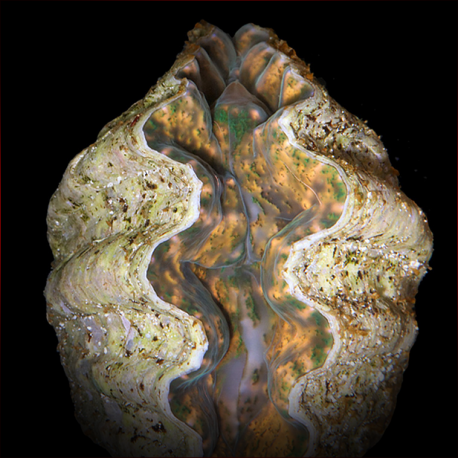More info
Datasheet
| Reef Compatible | Yes |
| Care Description | Moderate |
| Water Flow | Low to Medium |
| Specific Gravity | 1.023-1.025 |
| Carbonate Hardness | 8-12 |
| pH | 8.1-8.4 |
General Description
The Hippopus Clam, also known as Horse's Hoof, Bear Paw, or Strawberry Clam, is distinguished by its thick shell with prominent ribs and reddish blotches. Unlike other clams in the Tridacnidae family, the mantle of the Hippopus clam does not extend past the edge of the shell. It typically showcases brownish-green to gray hues with faint gold stripes and lacks tentacles in its incurrent aperture.
Aquarium Suitability
Suitable for reef aquariums with moderately high lighting, the Hippopus Clam thrives best when placed in the substrate with low to moderate water flow. As they grow, they shed their byssal gland and rely on their weight to stay anchored. Ideal placement involves positioning them on a flat rock buried in the substrate to safeguard the byssal opening from potential predators.
Demands, Care, and Hardiness
Moderate demands characterize the Hippopus Clam's care requirements. Ensuring calcium levels of at least 280 mg/L (ideally 380-440 mg/L) and adequate strontium and iodine is crucial. These clams derive part of their nutrition from moderately high lighting and require phytoplankton as a filter feeding food weekly. Additionally, they help regulate nutrients by feeding on ammonia and nitrates in the aquarium.
Reef Suitability
Reef-compatible, the Hippopus Clam brings value to reef tanks by aiding in nutrient control. Its ability to filter water efficiently makes it a beneficial addition to well-established reef environments.
Aquarium Setup
For optimal care, maintain water conditions within the parameters of pH 8.1-8.4, specific gravity of 1.023-1.025, and carbonate hardness (KH) of 8-12. The Hippopus Clam favors low to medium water flow and benefits from the supplementation of calcium, magnesium, strontium, and trace elements.
Behaviour
These clams exhibit a stationary nature, settling in the substrate and utilizing their weight to stay anchored. Their feeding behavior involves filter feeding on phytoplankton and aiding in nutrient control within the aquarium.
Feeding and Diet
As filter feeders, the Hippopus Clam consumes phytoplankton provided in the aquarium weekly. They also feed on ammonia and nitrates present in the water, contributing to nutrient balance in the reef tank.
Habitat and Distribution
Found in tropical waters, the Hippopus Clam is native to the Indo-Pacific region. Its natural habitat includes coral reefs with moderately high lighting and a steady flow of nutrient-rich water.

